
Your boat’s NMEA 2000 network has lots of data – depth, AIS, position, wind, electrical. etc. This makes it interesting to use this data for safety alerts for navigation systems. The NMEA Organization has created standards for NMEA 2000 alarms that allow devices to display and alert users of impending problems.
NMEA alerts are an essential part of modern marine electronics, helping to keep boaters safe by providing real-time alerts about on board systems and conditions at sea. Whether it’s a warning about engine performance, depth, collision hazards, NMEA alarms help keep you informed.
Understanding how these alarms work and how to set them up properly can make a big difference in your safety and peace of mind while on the water.
What is NMEA 2000?
Quite simply, NMEA is the way marine electronics works and communicated together. It is the data being sent by all marine instruments connected to the NMEA 2000 network of your boat. You can now have alerts about your NMEA 2000 data.
What are NMEA 2000 alerts?
- NMEA 2000 data is sent as messages, which are called PGNs (Parameter Group Number).
- NMEA 2000 Alert PGNs were added by the NMEA Association in 2012 and have now become mandatory since 2024 for new products.
- They add powerful and important alert and alarm functionality to the NMEA 2000 standard.
What are the benefits of these alerts?
- Universal compatibility: Any NMEA 2000 system or MFD should be able to receive and display alarms.
- Future-proof system: Alert PGNs were designed to be future-proof. Custom alerts can be implemented without firmware updates.
- Centralised Control: MFDs on the NMEA 2000 network should be able to manage and acknowledge alerts on the network.
Solutions to improve onboard safety
In this article we delve into the different security alarms and solutions you can add to your existing marine electronic setup. Some products include: Man Overboard alerts, universal NMEA 2000 alert and monitoring systems and carbon monoxide detectors.
Man Over Board Alert


MOB Alert generates MOB alarms for NMEA 2000 plotters and MFDs, by creating a synthetic AIS MOB SART beacon alert for the network as well as a standard MOB PGN.
MOB Alert from Digital Yacht synthesises an instant AIS MOB alert (like that from a beacon) with the press of a button thanks to its universal NMEA 2000 interface. It outputs this data onto the boat network and also creates an additional standard MOB alert PGN (the name given to data fields in NMEA 2000) so there are two methods of activating the plotter MOB function and recording the casualty position.
Activation is via a simple waterproof push switch which can be conveniently mounted at the helm. Multiple switches can be installed on larger vessels and any third-party switch of kill-cord could also be used. MOB Alert uses the boat’s NMEA 2000 GPS data to instantly record the MOB casualty position on the chartplotter.
MOB Alert has been recognised for its design and engineering by the industry and it received a DAME Award Nomination at the 2024 METS TRADE Show in Amsterdam
NavAlarm – NMEA 2000 Sounder
Digital Yacht has also designed NavAlarm, an ultra loud alarm that can connect to your boat’s NMEA 2000 network and alert independently of the plotter. It is self-powered from the network so it fits in seconds, and can be used as an audio alarm for any other NMEA alerts.
NavAlarm has an output rating of 102dB (same as a jet flying at 100 feet!), so you can be assured it will wake everyone up on board!
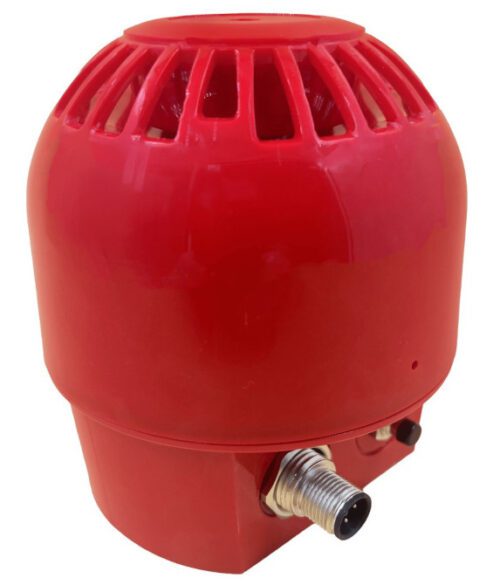
NavAlert – NMEA 2000 Monitor & Alert Solution
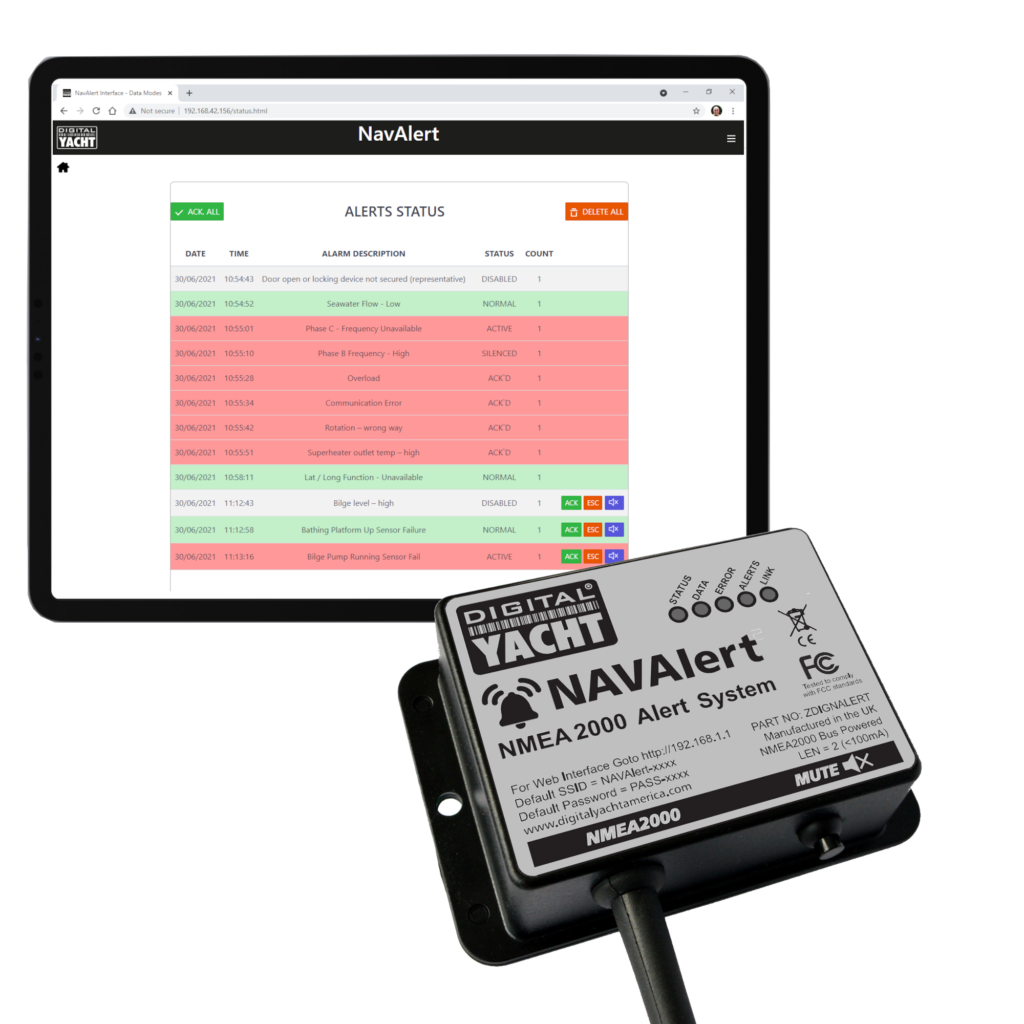
NavAlert is an alert and monitoring system for any NMEA 2000 network with custom anchor and collision alarms and SMS notifications via any of our 4G/5G routers. You can set up navigation, engine, electrical alerts for any parameter available on the NMEA 2000 network, as well as pop up alarms on Garmin MFDs.
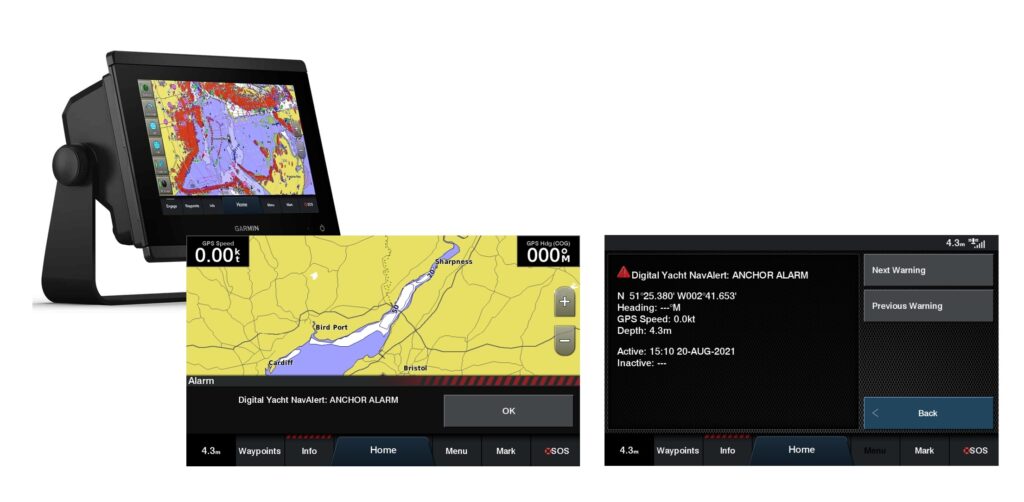
For example, you can set up alarms such as the following:
- Navigation alerts: Depth, heading, speed, etc.
- Electrical data alerts: Voltage, battery status, etc.
- Engine/generator alerts: Temperature, pressure, tank levels, fuel flow, etc.
NavAlert connects anywhere on the NMEA 2000 network and is self-powered from the network, o installation is super simple. Furthermore, it created a local WiFi network so setup is possible via any smartphone, tablet or PC. You simply have to choose the parameter you want to monitor and set an alarm.
Get SMS notifications of the status of your boat
NavAlert can also send an SMS notification through any of our 4G/5G routers like 4G Xtream . This allows you to monitor your boat remotely. For example, you can set up an anchor alert alarm while you step off your boat for lunch, knowing if your boat was to move from the programmed radius, you would immediately receive an SMS directly to your phone.
NavAlarm also can be paired with NavAlert!
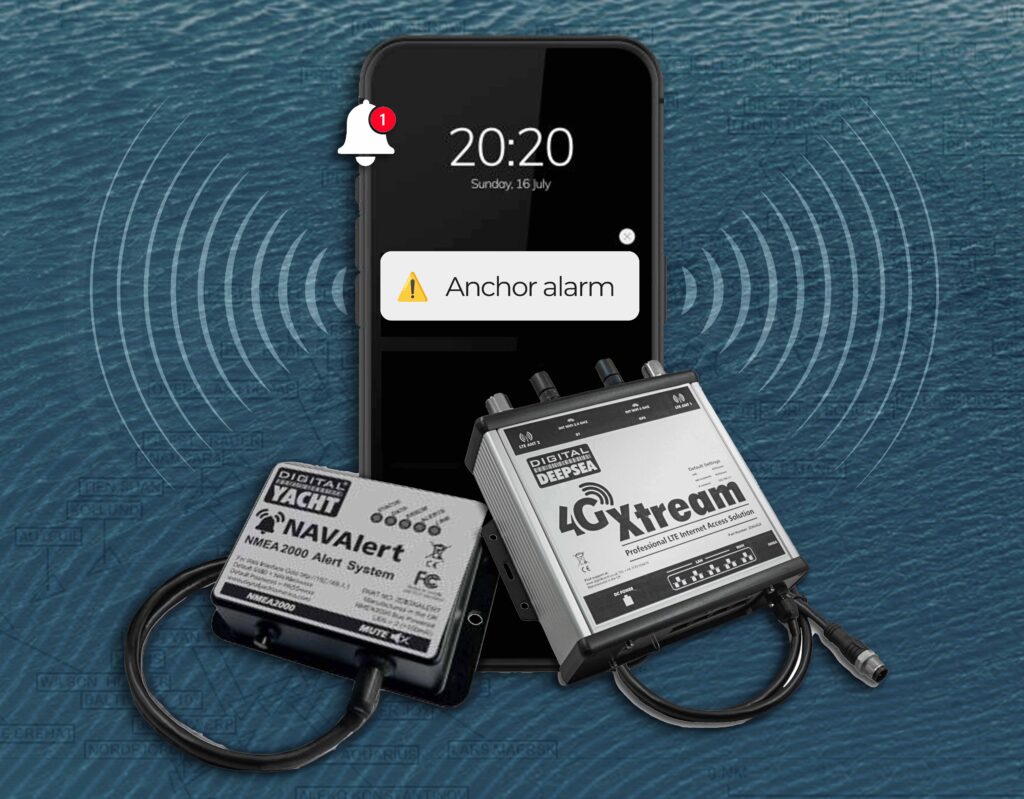
CO Alert – Carbon Monoxide NMEA 2000 Alert
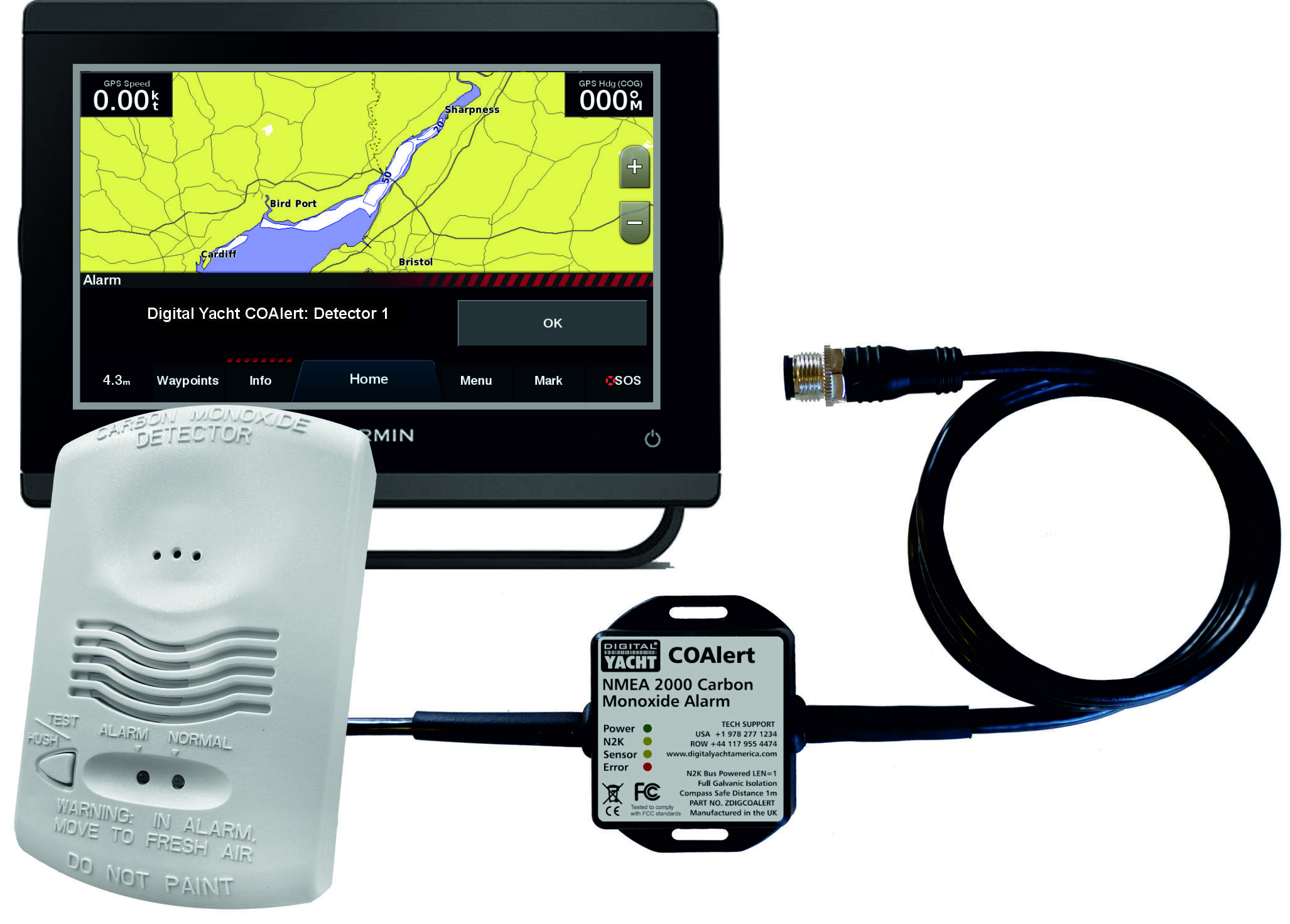
Did you know that carbon monoxide poisoning kills boaters every year? This odourless, tasteless gas is generated from incomplete combustion from engines, cookers, heaters, outboards, generators, etc. and it’s a real threat to boaters.
The lethal nature of CO means every boat should be protected with a detector. Of course, a typical household alarm could be installed but these have limitations for on board use. They use an internal battery, which will often expire when left for long periods of time. As we know, it is all too easy to forget to replace with seasonal use on a boat.
CO Alert from Digital Yacht is built for demanding maritime environment. In addition, it has an NMEA 2000 cable, creating a standard NMEA 2000 alert PGN that allows these alarms to appear on compatible MFDs.
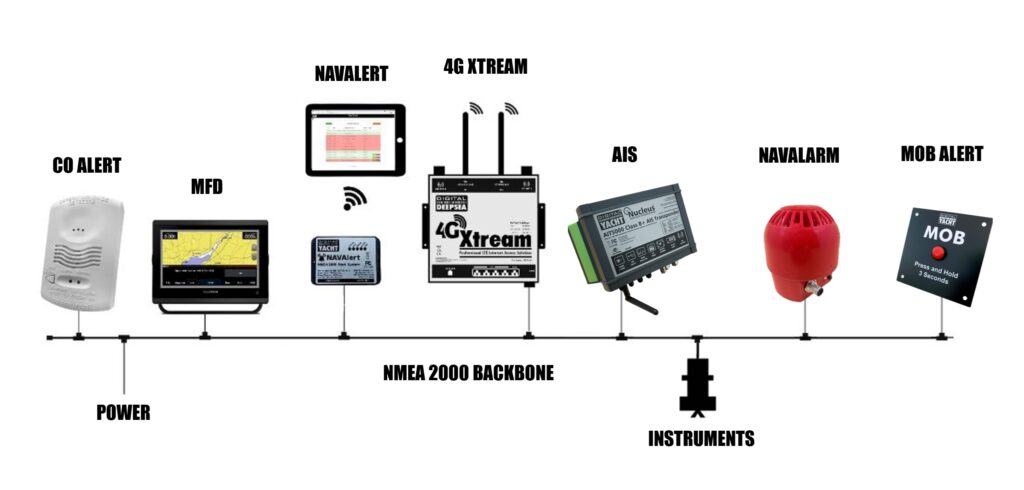
The system can also be expanded further with NavAlert and 4G/5G internet access systems. Thanks to this combination, SMS messages can be generated for a CO alert and sent to your mobile phone.
Overall, NMEA 2000 navigation alerts are a flexible and very interesting feature that can be decisive in prevention and safety on board.
For more information, do not hesitate to check out our website.








